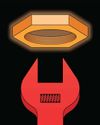
Researchers are attempting to make egg cells without human ovaries.
In 2016, two Japanese reproductive biologists, Katsuhiko Hayashi and Mitinori Saitou, made an announcement in the journal Nature that read like a science-fiction novel. The researchers had taken skin cells from the tip of a mouse’s tail, reprogrammed them into stem cells, and then turned those stem cells into egg cells. The eggs, once fertilized, were transferred to the uteruses of female mice, who gave birth to ten pups; some of the pups went on to have babies of their own. Gametes are the cells, such as eggs and sperm, that are essential for sexual reproduction. With their experiment, Hayashi and Saitou provided the first proof that what’s known as in-vitro gametogenesis, or I.V.G.—the production of gametes outside the body, beginning with nonreproductive cells—was possible in mammals. The mice that had descended from the lab-made egg cells were described as “grossly normal.”
Diese Geschichte stammt aus der April 24 - May 01, 2023 (Double Issue)-Ausgabe von The New Yorker.
Starten Sie Ihre 7-tägige kostenlose Testversion von Magzter GOLD, um auf Tausende kuratierte Premium-Storys sowie über 8.000 Zeitschriften und Zeitungen zuzugreifen.
Bereits Abonnent ? Anmelden
Diese Geschichte stammt aus der April 24 - May 01, 2023 (Double Issue)-Ausgabe von The New Yorker.
Starten Sie Ihre 7-tägige kostenlose Testversion von Magzter GOLD, um auf Tausende kuratierte Premium-Storys sowie über 8.000 Zeitschriften und Zeitungen zuzugreifen.
Bereits Abonnent? Anmelden

ART OF STONE
\"The Brutalist.\"

MOMMA MIA
Audra McDonald triumphs in \"Gypsy\" on Broadway.

INTERNATIONAL AFFAIRS
\"Black Doves,\" on Netflix.

NATURE STUDIES
Kyle Abraham's “Dear Lord, Make Me Beautiful.”

WHAT GOOD IS MORALITY?
Ask not just where it came from but what it does for us

THE SPOTIFY SYNDROME
What is the world's largest music-streaming platform really costing us?

THE LEPER - LEE CHANGDONG
. . . to survive, to hang on, waiting for the new world to dawn, what can you do but become a leper nobody in the world would deign to touch? - From \"Windy Evening,\" by Kim Seong-dong.

YOU WON'T GET FREE OF IT
Alice Munro's partner sexually abused her daughter. The harm ran through the work and the family.

TALK SENSE
How much sway does our language have over our thinking?

TO THE DETECTIVE INVESTIGATING MY MURDER
Dear Detective, I'm not dead, but a lot of people can't stand me. What I mean is that breathing is not an activity they want me to keep doing. What I mean is, they want to knock me off. My days are numbered.